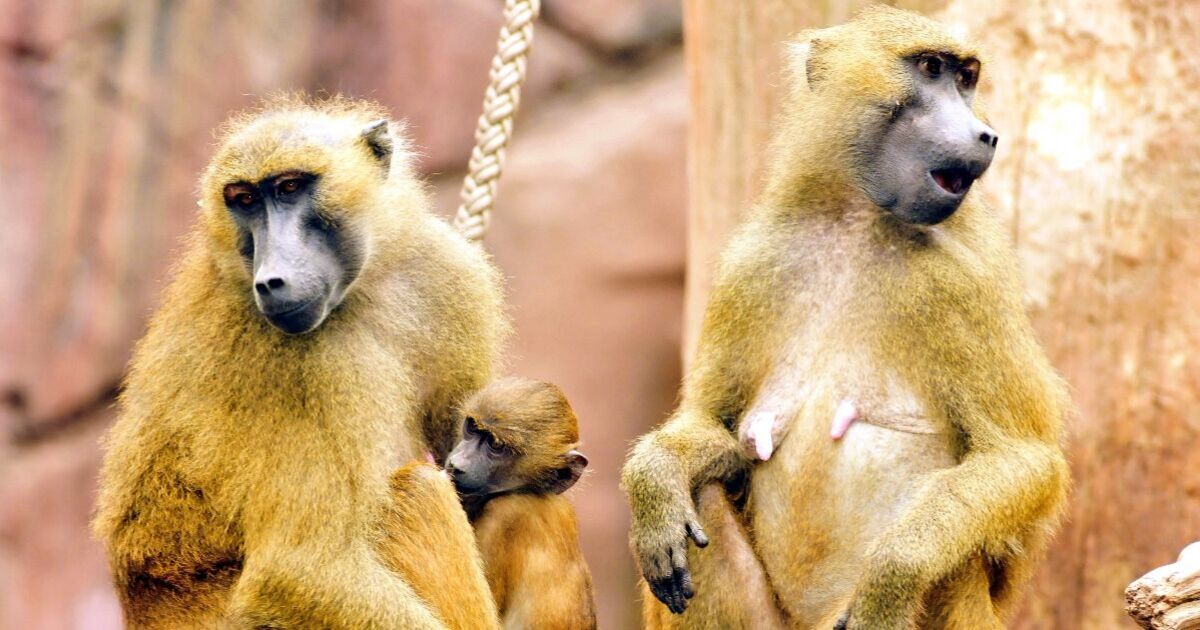The culling of a dozen baboons which were then fed to lions has sparked death threats against zoo staff. Twelve Guinea baboons were put to sleep in July because of overcrowding in their enclosure at Tiergarten Nuremberg in Germany.
Some of their remains were used in research while the remainder were fed to carnivores at the zoo, which was targeted by furious protesters. A number of activists were arrested when the zoo closed on July 29 to carry out the cull. Zoo director, Dr Dag Encke, told Sky News: “We love these animals. We want to save a species. But for the sake of the species, we have to kill individuals otherwise we are not able to keep up a population in a restricted area.”
Dr Encke told the broadcaster death threats had been sent to both himself and staff, who he said were “really suffering” as a result of the “bad words, insults and threats”.
He said the usual threat is “we will kill you, and we’ll feed you to the lions”, but added what was “really disgusting” is when they compare the zoo’s actions to those of Dr Josef Mengele.
Mengele was a Nazi who carried out experiments on prisoners at Auschwitz during World War 2. Dr Encke said: “That is really insulting all the victims of the Second World War and the Nazi regime.”
News of the cull in Germany comes after a zoo in Denmark asked for donations of small pets as food for its predators.
Aalborg Zoo said it was trying to mimic the natural food chain for its animals for the sake of both their welfare and “professional integrity”.
The zoo in northern Denmark explained in a Facebook post that “if you have a healthy animal that needs to be given away for various reasons, feel free to donate it to us.”
Guinea pigs, rabbits and chickens were suggested as possible donations. The zoo said it was also interested in receiving horses.
The zoo said after being euthanised the animals would be used as feed. It added: “That way, nothing goes to waste — and we ensure natural behaviour, nutrition and well-being of our predators”.
The call for pet donations was accompanied by a picture of a wildcat baring its teeth and a link to the zoo’s website.

